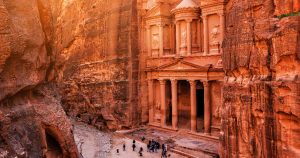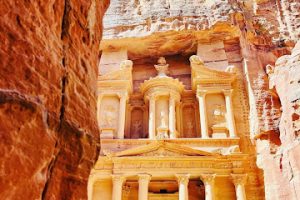The Enthralling Unknown Past of Petra


Nestled in a secluded valley surrounded by towering mountains, Petra reveals an intriguing narrative of architectural brilliance and cultural depth. The Siq, a narrow fault serving as the city’s entrance, guides visitors through a landscape adorned with Nabataean art and tombs dedicated to their gods. At the heart of Petra stands the renowned “Al’Khazne” or the Treasure, the facade of King Aretas III’s tomb. This architectural masterpiece, a blend of Nabataean and Hellenistic styles, showcases the artisans’ skill in carving entire tombs into the cliffs. The Treasure’s design, with a deep excavation shielding it, attests to the craftsmen’s precision.


Petra, however, is not merely a city of tombs; it houses a grand theater, houses with Roman influences, and temples like the one dedicated to Dushara, the god of the mountain. The Monastery, perched atop a challenging mountain, poses intriguing questions about Petra’s purpose. It is believed that Petra served as one of the five sacred cities for Nabataean burial practices, emphasizing its role as a pilgrimage site for the deceased. As you navigate Petra’s paths, the city’s unique synthesis of art, architecture, and spiritual significance transports you to an ancient world, prompting reflection on its mysterious past.